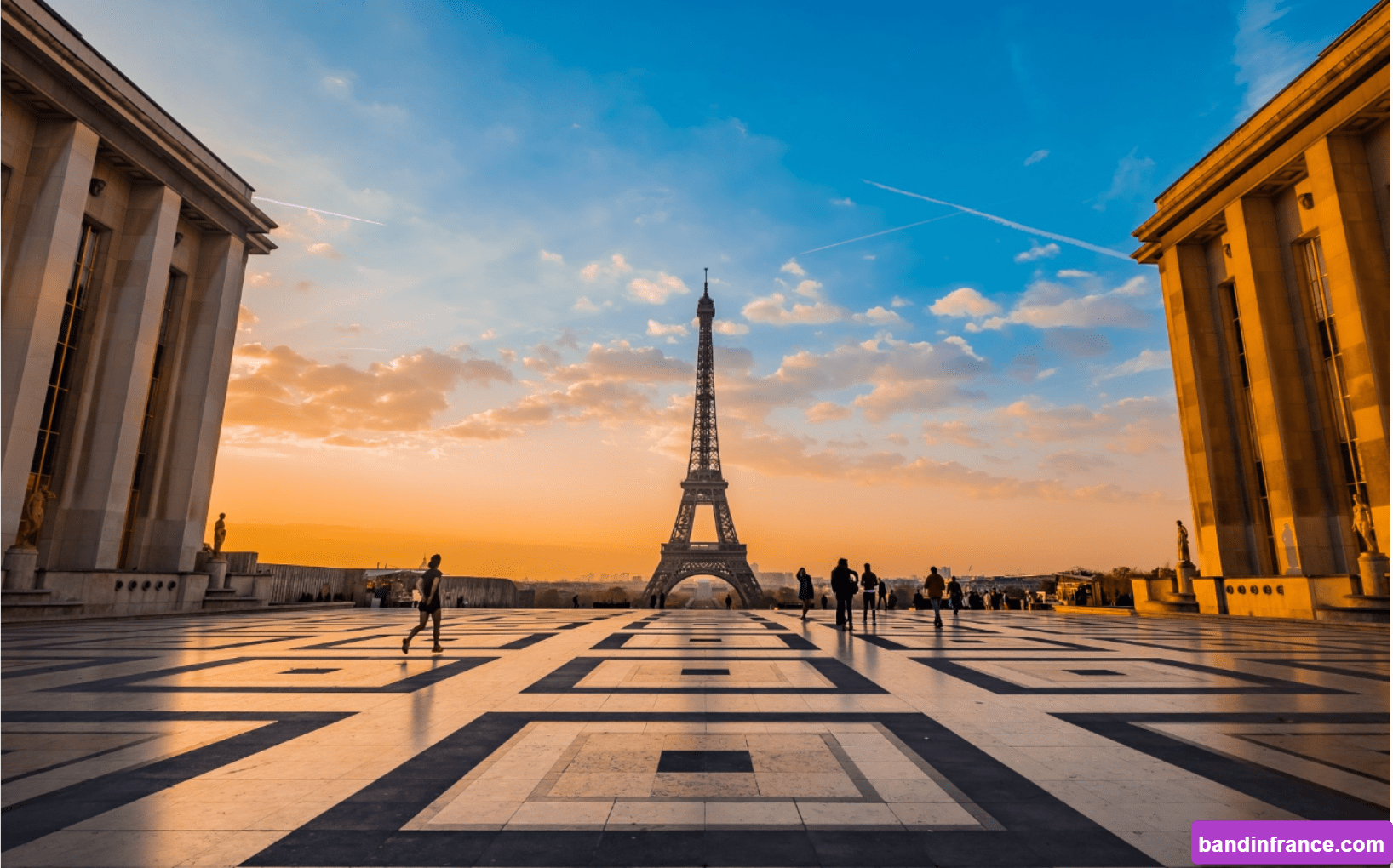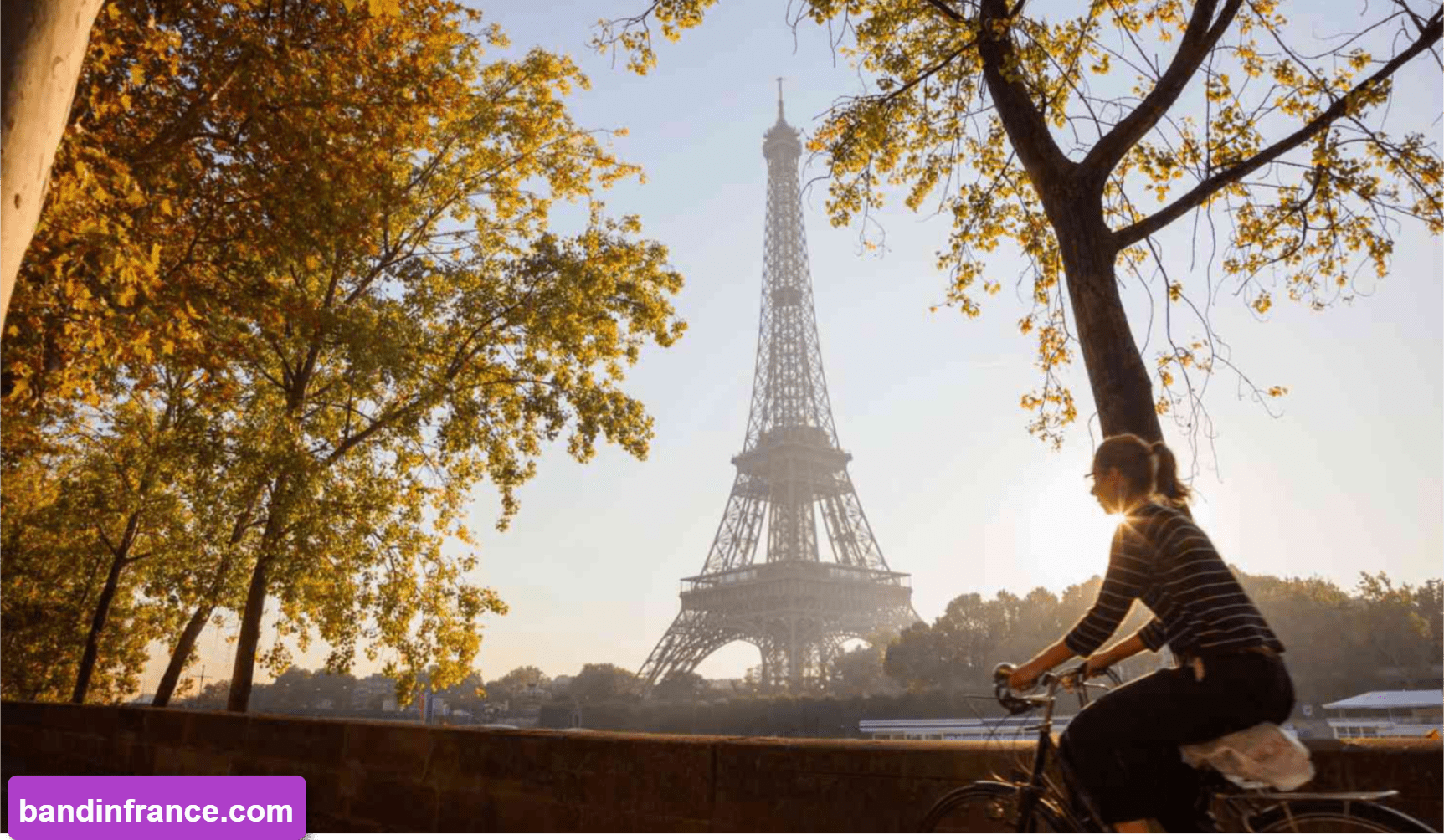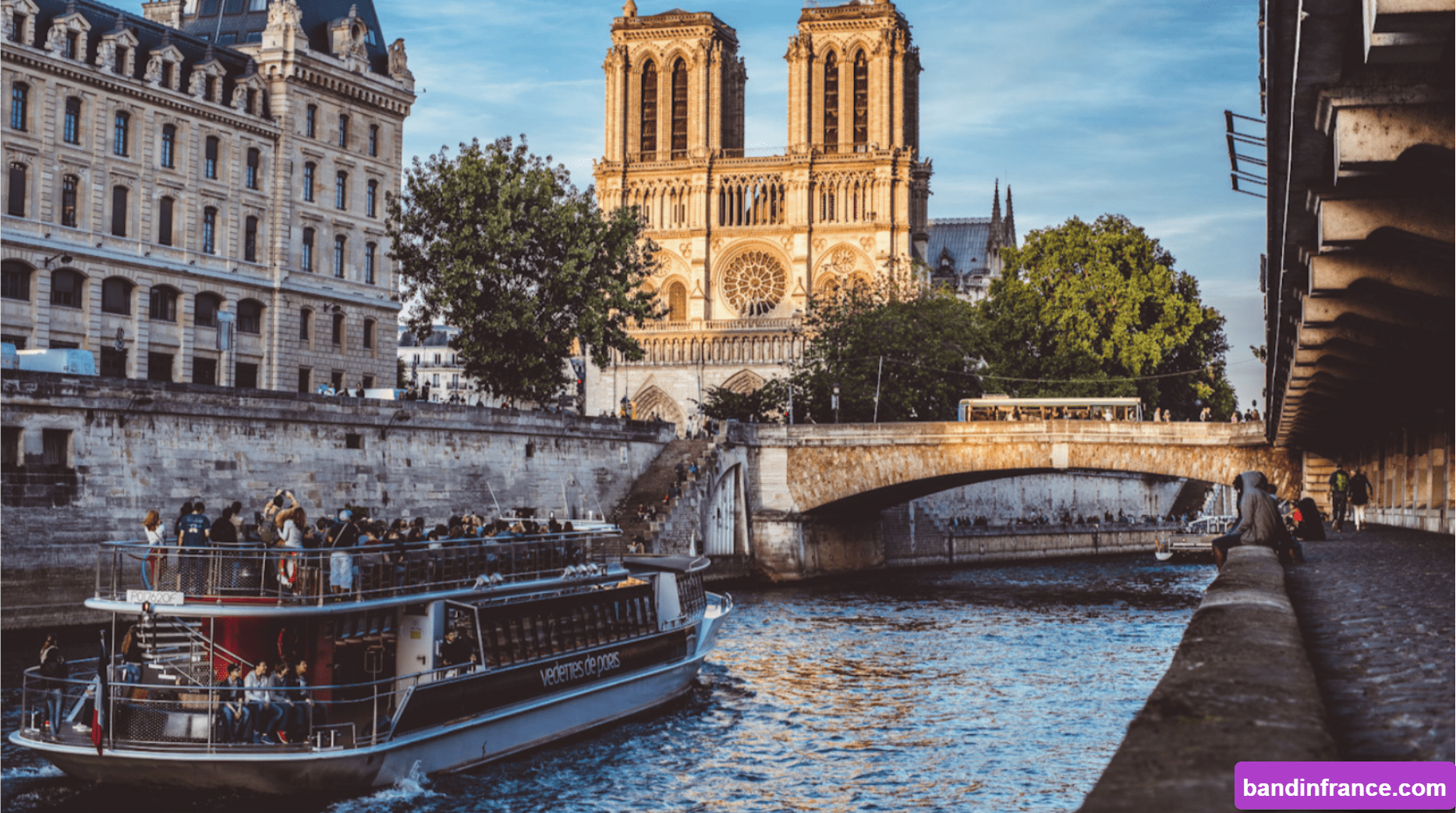Nearly 7 million people visit the Paris monument annually. Here’s how to avoid them.
The Eiffel Tower is one of the most iconic landmarks globally. When it was completed in 1889, it held the title of the world’s tallest structure until New York City’s Chrysler Building surpassed it in 1930.
The Eiffel Tower is among the world’s most popular tourist destinations. Each year, nearly 7 million visitors climb Gustav Eiffel’s renowned construction, initially built for the 1889 Exposition Universelle, to gaze over the expansive view of Paris below. This year, various exhibitions and events will commemorate the 100th anniversary of the engineer’s passing, but the most fitting homage remains the most frequent one: a visit to his legendary creation to admire its 1,083 feet of latticework, 2,500,000 rivets, and 7,300 tons of iron. But how can you experience this without getting lost in the crowds? We’ve got some tips.
About the Eiffel Tower

The Eiffel Tower, an architectural marvel, stands as a symbol of Paris’s grandeur and innovation. Constructed in 1889 for the World’s Fair, it was the tallest man-made structure at the time and continues to captivate millions with its intricate iron lattice design. Rising 1,083 feet above the city, it offers breathtaking views of Paris, making it a must-visit destination for travelers worldwide. The Eiffel Tower is not just a monument; it’s a testament to human ingenuity and a timeless icon of love, culture, and history.
Beyond its impressive height and design, the Eiffel Tower has become a global icon, representing the romance and elegance of Paris. Its shimmering lights at night, especially during the hourly light show, add to its enchanting allure, drawing visitors from every corner of the world. Whether viewed from the ground, climbed step by step, or admired from afar, the Eiffel Tower offers an unforgettable experience, embodying the spirit of Paris and leaving a lasting impression on all who behold it.
Understand the Eiffel Tower’s Layout to Plan Your Visit
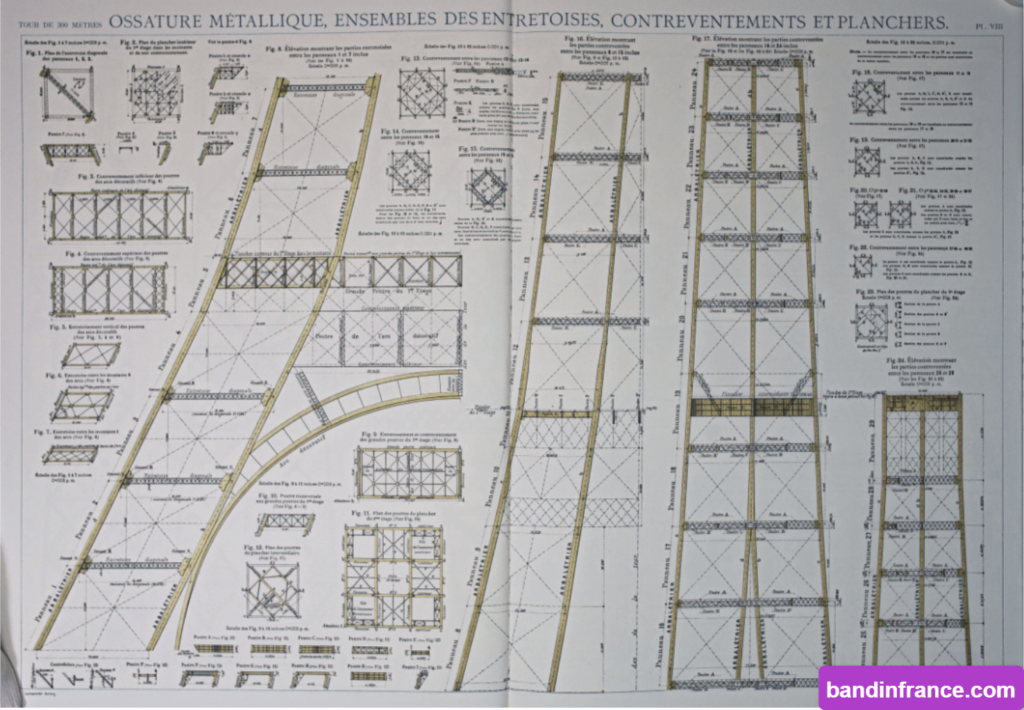
The Eiffel Tower features three viewing platforms: the first platform (187 feet), the second platform (377 feet), and the summit (906 feet), which has two levels, one indoor and one outdoor.
To reach the first and second floors, visitors can choose between elevators or stairs (more on that later), but the summit is only accessible by elevator.
Guests who purchase elevator tickets must begin their visit at the highest level their ticket covers, while those opting for the stairs can decide for themselves. Remember, this decision must be made beforehand—there’s no option to buy a ticket to the second floor and then upgrade to the summit once you arrive.
Bottlenecks occur at several points, so it’s helpful to know where they are to factor these waits into your day. The first bottleneck is at the security check at the tower’s two main entrances. (If you’re buying tickets on-site, there will be another wait at the ticket counters.) The next delay happens at a security checkpoint at the elevators. Visitors taking the smaller lift to the summit of Eiffel Tower will likely face another wait on the second floor while queuing for the elevator. Unfortunately, there’s no way to bypass these delays.
Buy Tickets in Advance
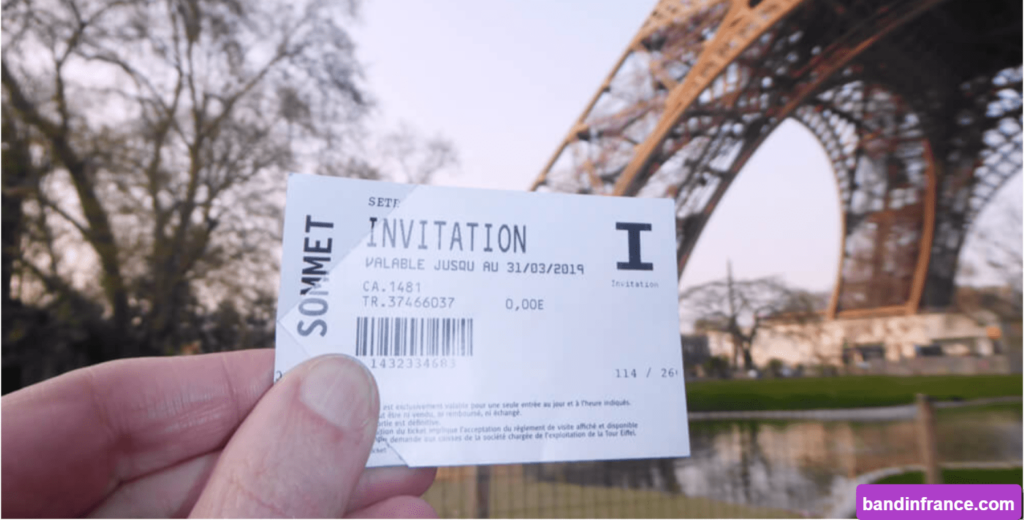
To avoid long waits at the ticket counters (which can exceed an hour), purchase your tickets online—most options are available up to 60 days in advance. Pro tip: The tickets are timed, so if you’re planning to visit at sunset, try to schedule your tickets for about 90 minutes beforehand.
However, if you’re open to taking the stairs—all 674 of them—your strategy might differ. For example, if you plan to go to the very top, the “stairway + lift” ticket combo (stairs to the second floor, then elevator to the summit) is only sold on-site. Tickets for the stairs to the first and second floors can be bought online (up to 14 days in advance). Weather conditions are also something to consider.
“The conventional wisdom is that tickets must be booked in advance, but the issue is, how do you know when the weather will be good?” says Wendy Perrin, founder of the travel-advice service WendyPerrin.com and TripAdvisor’s Travel Advocate. “You don’t want to go on a foggy day.
You need favorable weather conditions, which you can’t predict. So the main problem is how to book ahead for something as variable as that?” In the past, Perrin has waited for a clear day, then purchased her tickets in person and climbed the 674 steps to the second platform. But on her most recent trip in late April on a Sunday afternoon, the ticket line was an hour long. She even saw a sign warning: “The top floor may be closed to visitors during busy times due to capacity limits. Delay more than 45 minutes on the second floor.”
Pro tip: Jennifer Virgilio of Queen of Clubs, a bespoke travel concierge service specializing in France and Italy, points out that behind-the-scenes private tours before or after hours are no longer allowed. Additionally, per the tower’s website, there are no VIP or cut-the-line tickets—regardless of what some may advertise online.
Avoid the Busiest Days and Times
Granted, this can be difficult because, well, it’s Paris, and this is the Eiffel Tower. However, the tower’s website provides a helpful list of the busiest times of the year (generally June–September, with specific weeks highlighted), as well as holidays that might make crowds even worse.
“November, January, and February are the best months to visit,” says Virgilio. She’s quick to add, though, that even during these months, this attraction rarely slows down. “I took my daughter in November, and the queue was about an hour long to go to the very top. Getting through the second floor is manageable. You go through security, and then you can proceed to the lift. It’s all very standard, but you’re moving through the process with the crowds. There’s no luxury way to do this, and there’s no way to avoid them.”
In terms of the time of day (the tower is open from 9:30 a.m. to 11:00 p.m.), the first few hours in the morning and the last few at night are likely to have the fewest visitors. During Perrin’s trip, visitors were being admitted until 11:45 p.m.—”so you could see the City of Light illuminated.”
Choose the Stairs

Visitors used to be able to climb the entire tower to the top, but now, they can only take the stairs to the first two platforms—674 steps. (After that, the elevator to the summit is mandatory.) Perrin says the stairs are worth it. Visiting the Eiffel Tower without crowds offers a rare and serene experience, allowing you to fully appreciate its grandeur and beauty.
“In many European monuments, there’s no view on the steps. When you’re climbing to reach the top of a bell tower or cathedral dome, it can feel claustrophobic. So many places have spiral staircases surrounded by stone, with narrow passages and no view. That’s not the case here—there’s a view with every step. You have sightlines, you can see far, and nothing obstructs your view. You also gain an appreciation for the ironwork and the structure because you’re walking through it.”
Stair tickets can be bought either online (up to 14 days in advance) or on-site at the South pillar, which is also where the dedicated steps are located. This is the least expensive option and is always available, unlike the summit option, which can close.
Dine at the Eiffel Tower’s Michelin-Starred Restaurant

Le Jules Verne restaurant is located on the tower’s second floor. Guests with reservations at this one-Michelin-star restaurant can take a dedicated elevator to it, bypassing the rest of the crowd. A reservation includes access to the tower’s first viewing platform, but if you want to go to the top, you’ll still need to purchase a ticket and queue for the summit elevator like everyone else (it’s recommended to visit before you dine).
Skip the Summit
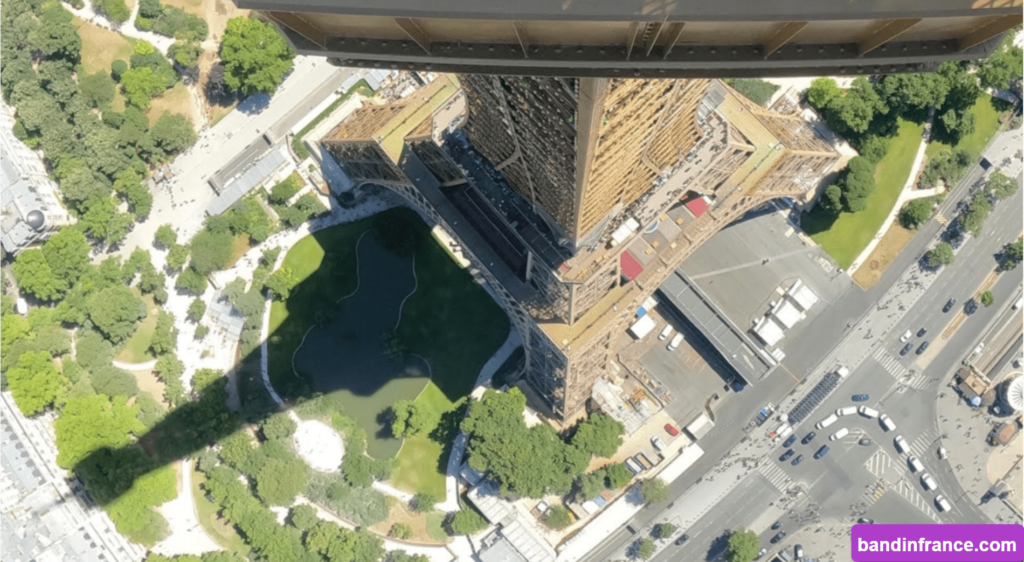
Hear us out. While most visitors automatically aim to reach the top of the Eiffel Tower, there’s a case for avoiding the crowds and hassle associated with waiting for that smaller elevator to the summit.
“The views from the first and second floors are almost better than the view from the top,” Perrin says. “From the top, you get a typical aerial view of a city where everything seems far away—whereas lower down, you’re more in the midst of it, and you can see details that aren’t visible from the top.”
Experience the Eiffel Tower from the Outside
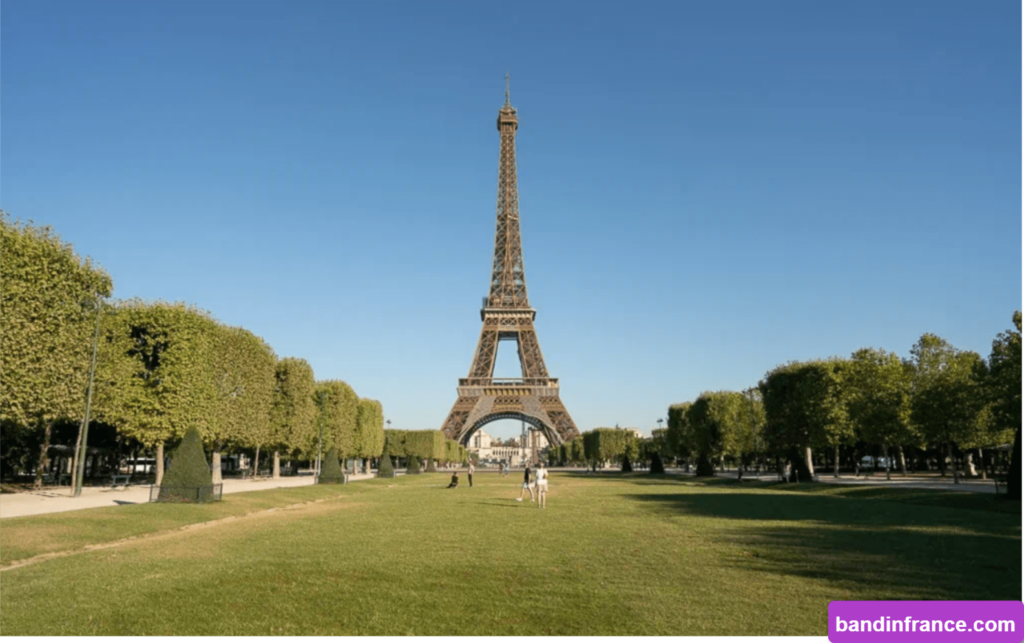
You know what you can’t see from the Eiffel Tower? The Eiffel Tower itself. That’s why Virgilio suggests other viewing platforms, like the Arc de Triomphe or the Montparnasse Tower, which are less crowded. “Because all you’re doing when you go up the Tower is looking at the city,” she says. “I’d rather have [my travelers] view the tower itself.” To that end, she often arranges special experiences such as leisurely private boat cruises or luxury picnics with views of the iconic structure instead.
A free, DIY option is simply strolling under the tower and through the surrounding gardens—no ticket required, though you’ll need to pass through a security check.
